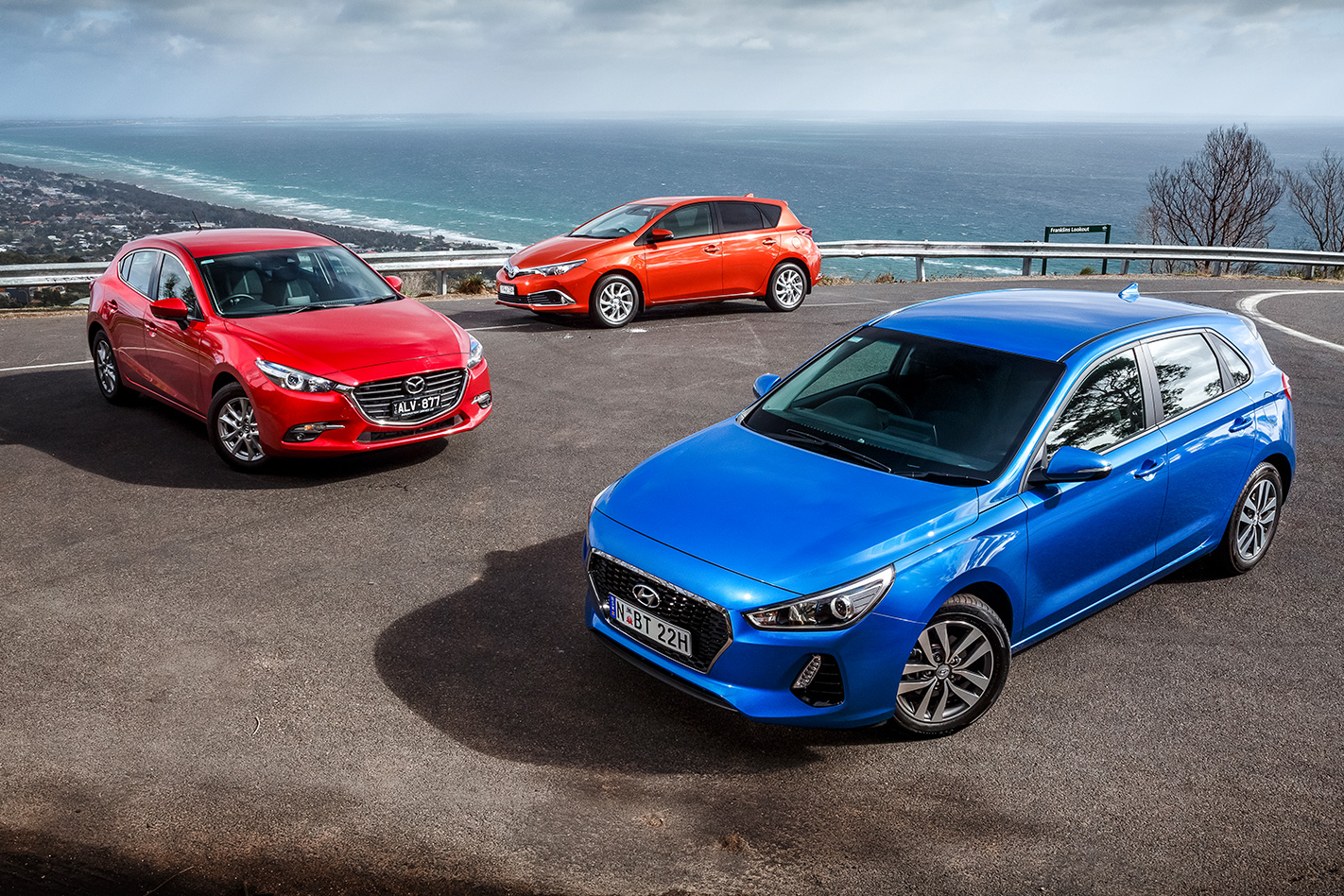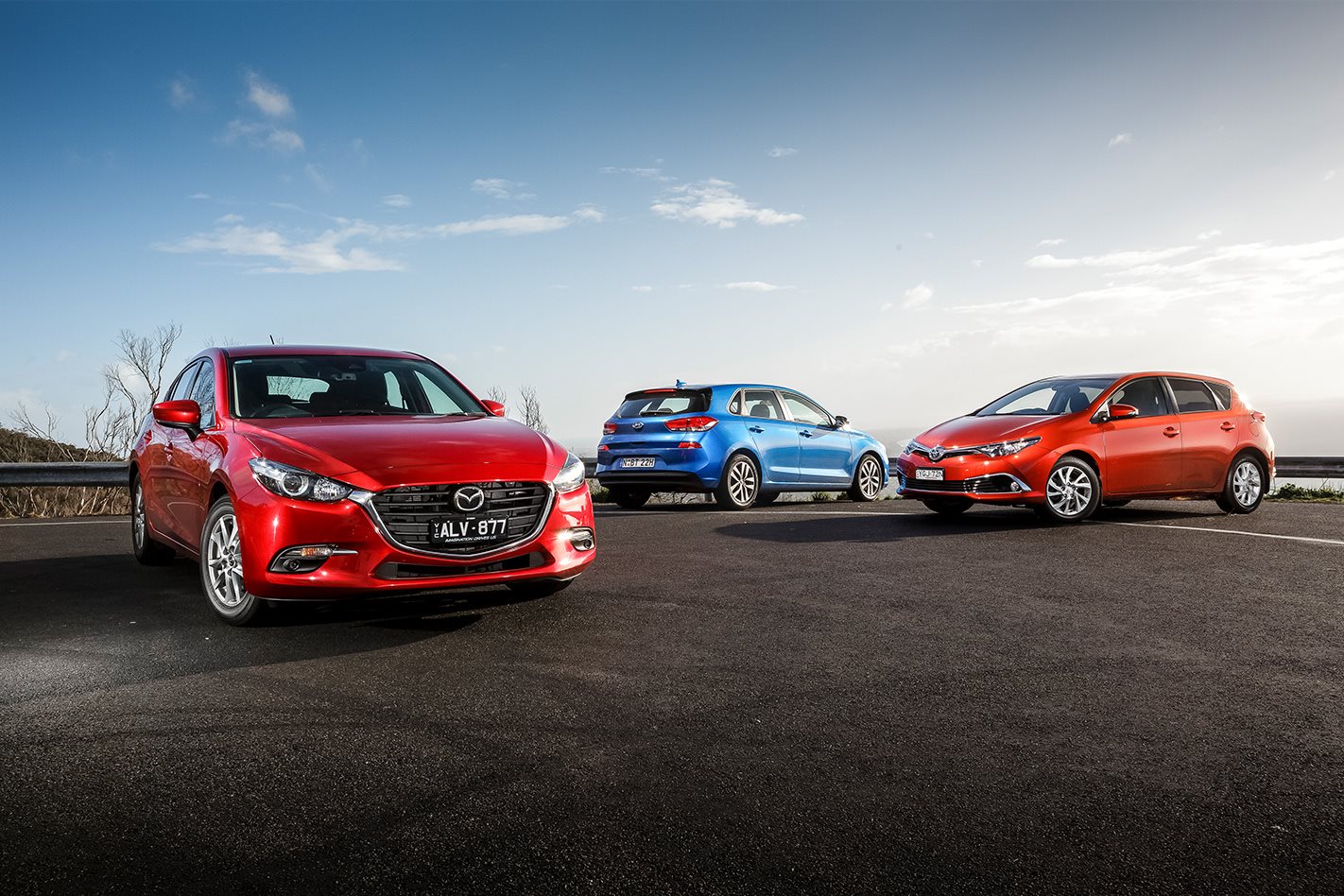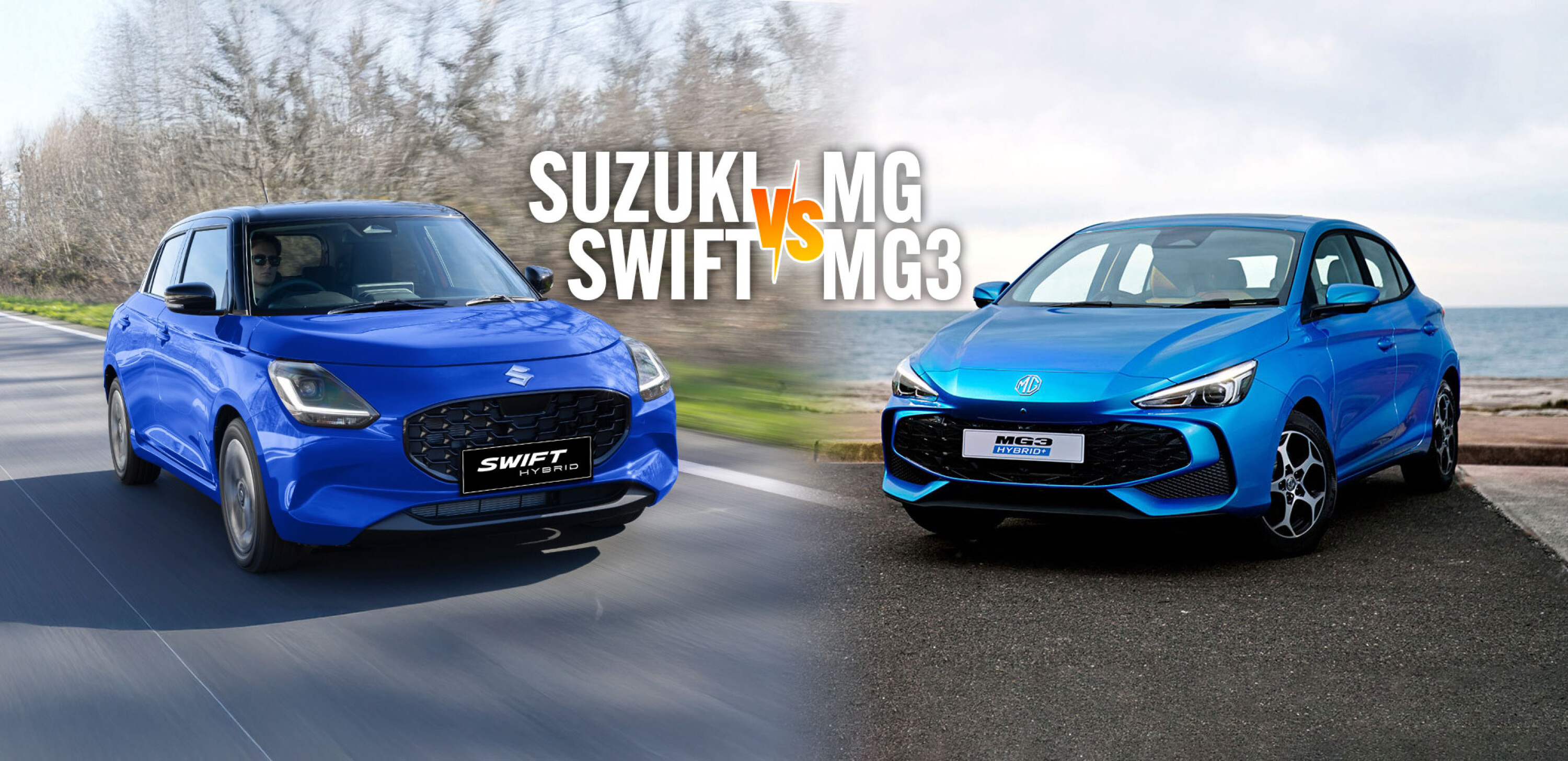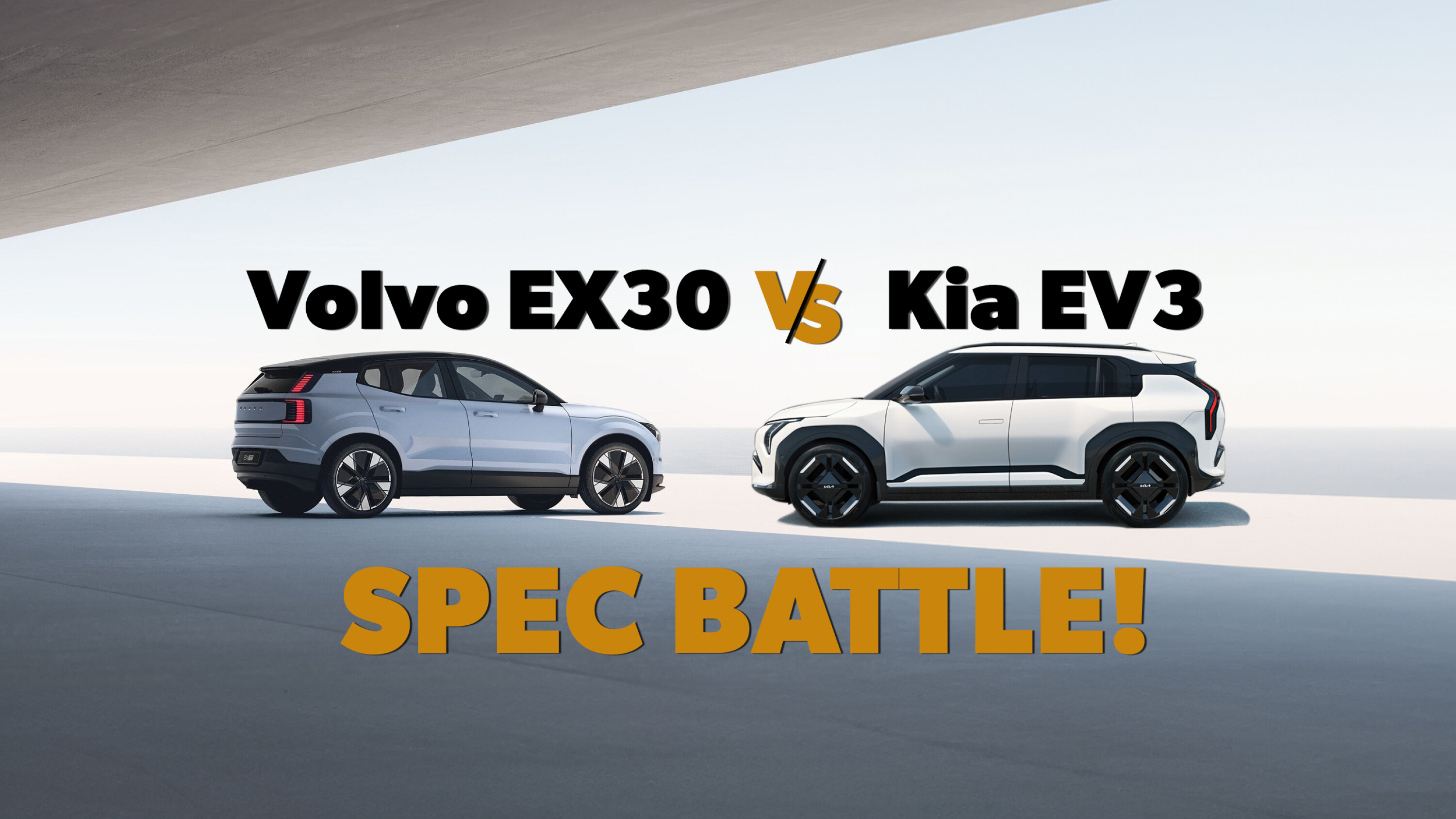VOLUME-SELLERS are rarely sexy. No surprises there. If you’re reading this expecting the usual Wheels-style gloss, glamour and horsepower, you may be better served browsing our other content instead. But you know what? I bet you won’t.
Nearly one in five cars sold in Australia belongs to the small car category, and the three small hatches we have here are the most popular models of that segment: the Toyota Corolla, Mazda 3 and Hyundai i30.

But which is the best? For years, the default answer to the question of “which runabout hatchback should I buy” has been “Corolla”, but the i30 Active’s $23,250 retail price is lineball with the Corolla Ascent Sport and the most popular Mazda 3 is $1640 above those two at $24,890.
The Corolla is further disadvantaged by its age, given it launched in its current generation in 2012. The Hyundai only arrived locally this year, while the Mazda 3 is only a year younger than the Corolla. Put the Mazda and Toyota side by side, however, and most would guess that the age gap is much broader than that.
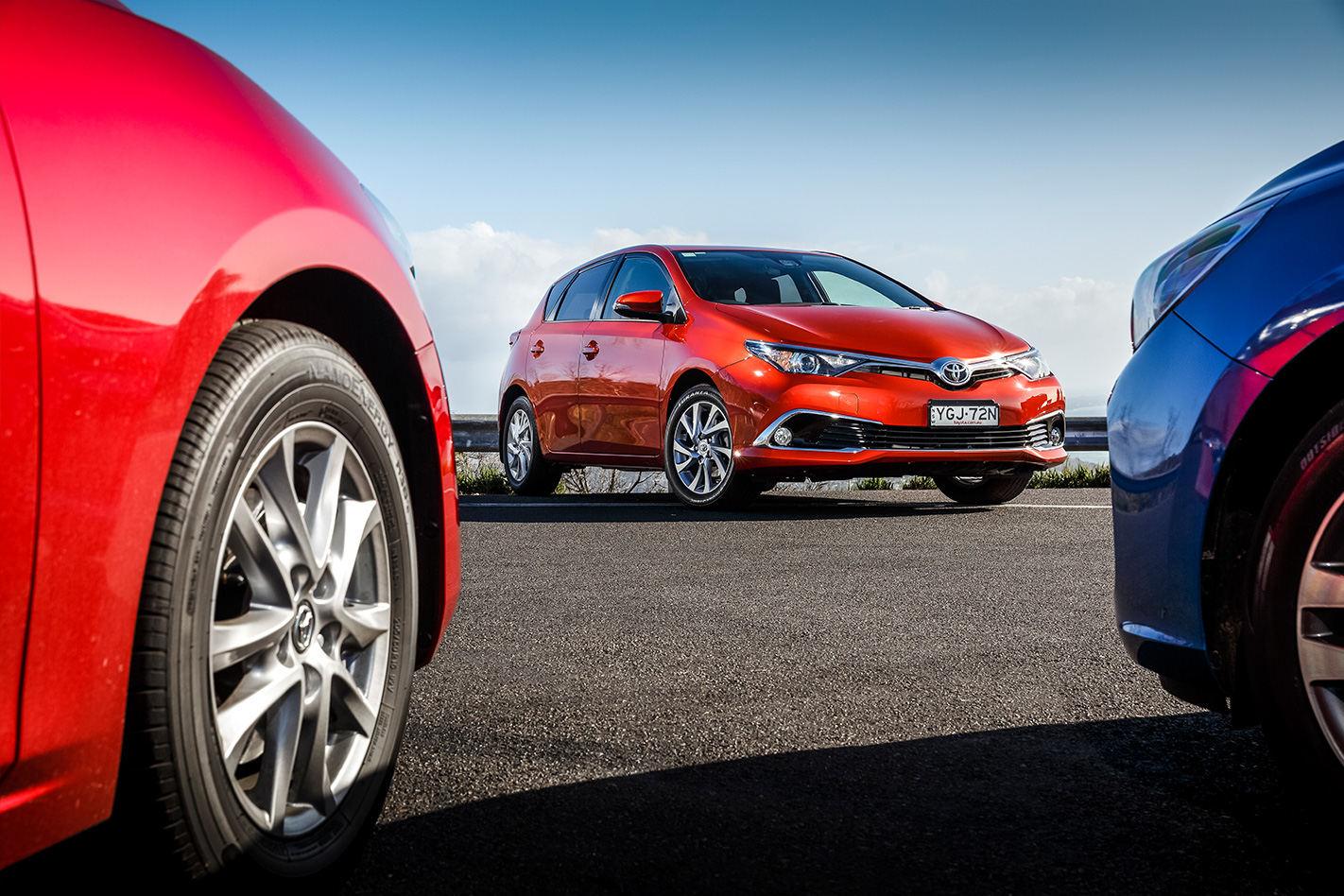
Infotainment stinginess costs the Corolla yet more points. A clunky touchscreen interface and low-set screen harm it ergonomically, while there’s no provision for any form of smartphone mirroring. Further salt in the wound is Toyota stinging you $1000 extra to put sat-nav in the Ascent Sport, a feature which is standard in the Mazda 3 Maxx and i30 Active. With the addition of the autonomous braking-equipped safety pack and premium paint, that takes the price of the Toyota on test to $25,450.
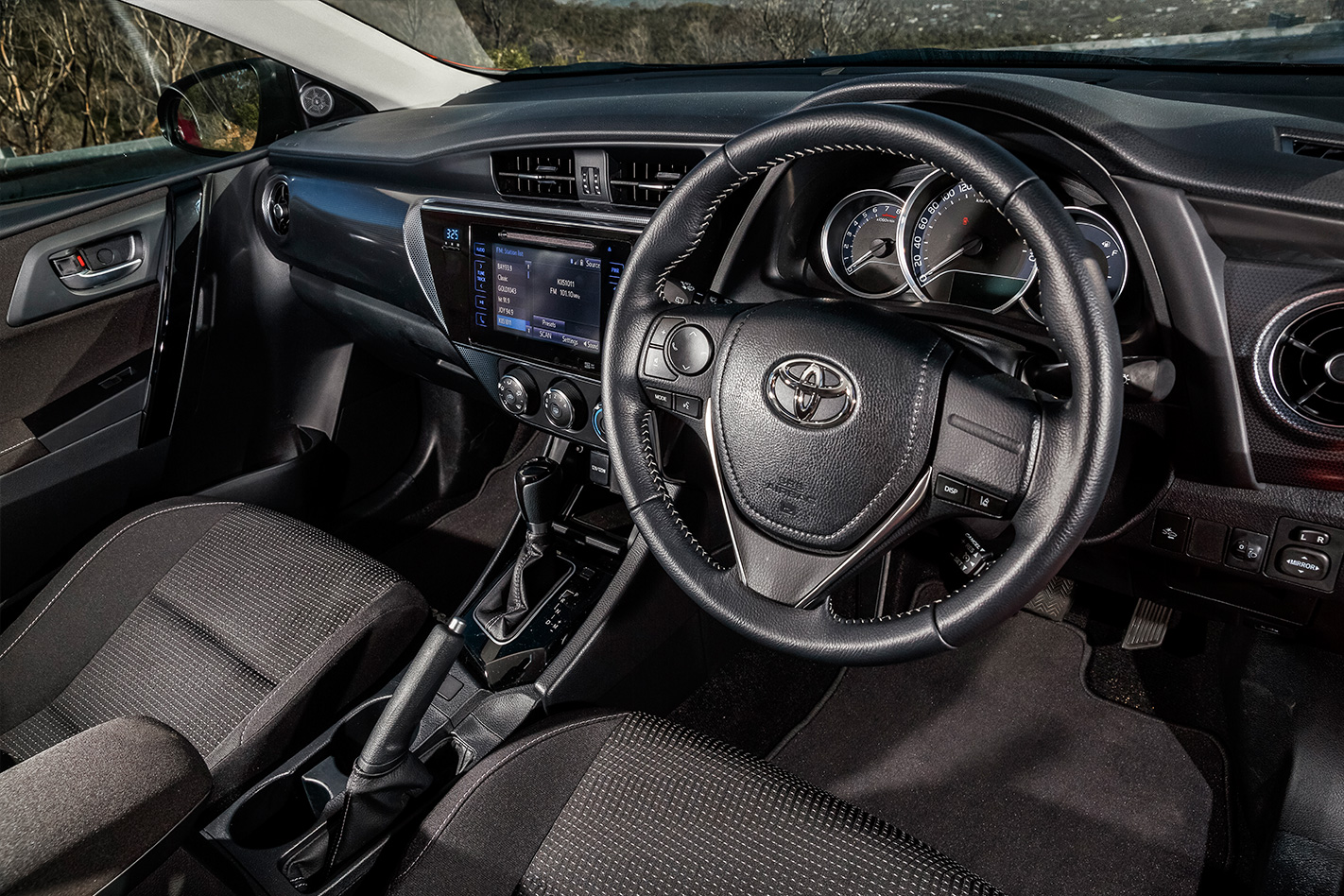
On top of that, the Mazda 3’s more cohesive interior styling, upmarket materials and finer-grained plastics give the Maxx – which is just one rung above the base Mazda 3 Neo – a borderline premium flavour that the Corolla can’t hope to equal even in its higher grades.
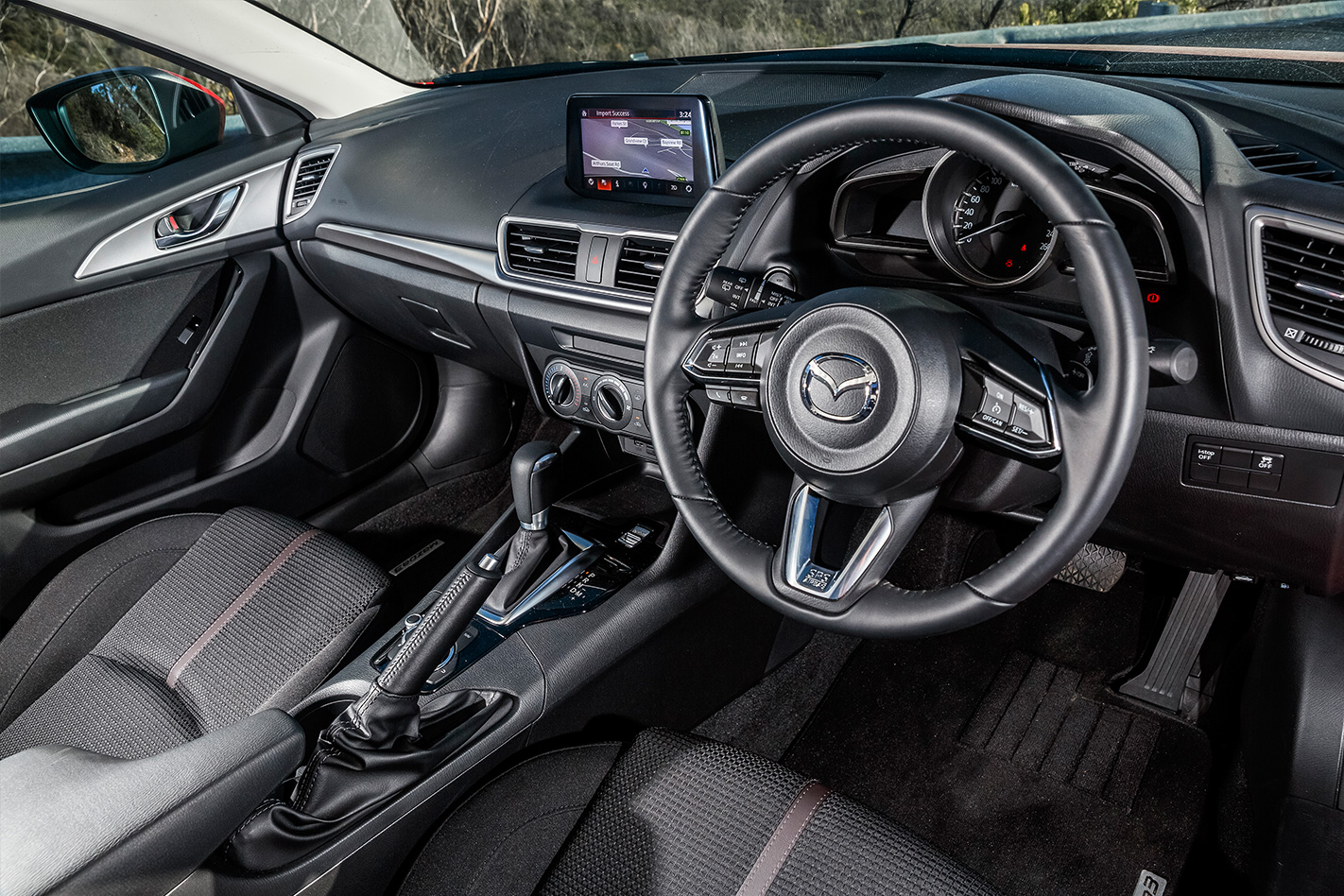
But we’re familiar with these traits, given both the Mazda 3 and Toyota Corolla have been on the market for around half a decade now. The newcomer is the i30, and it’s the spearhead of Hyundai’s campaign to catapult itself to the top of shopping lists without relying solely on mega-keen driveaway deals.

Big buttons, clear dials and an intuitive dashboard layout are other i30 virtues, though you’ll need to reach far to get to the leftmost buttons flanking that big screen. Not a huge complaint mind you, given controls on the steering wheel cover the same functions.
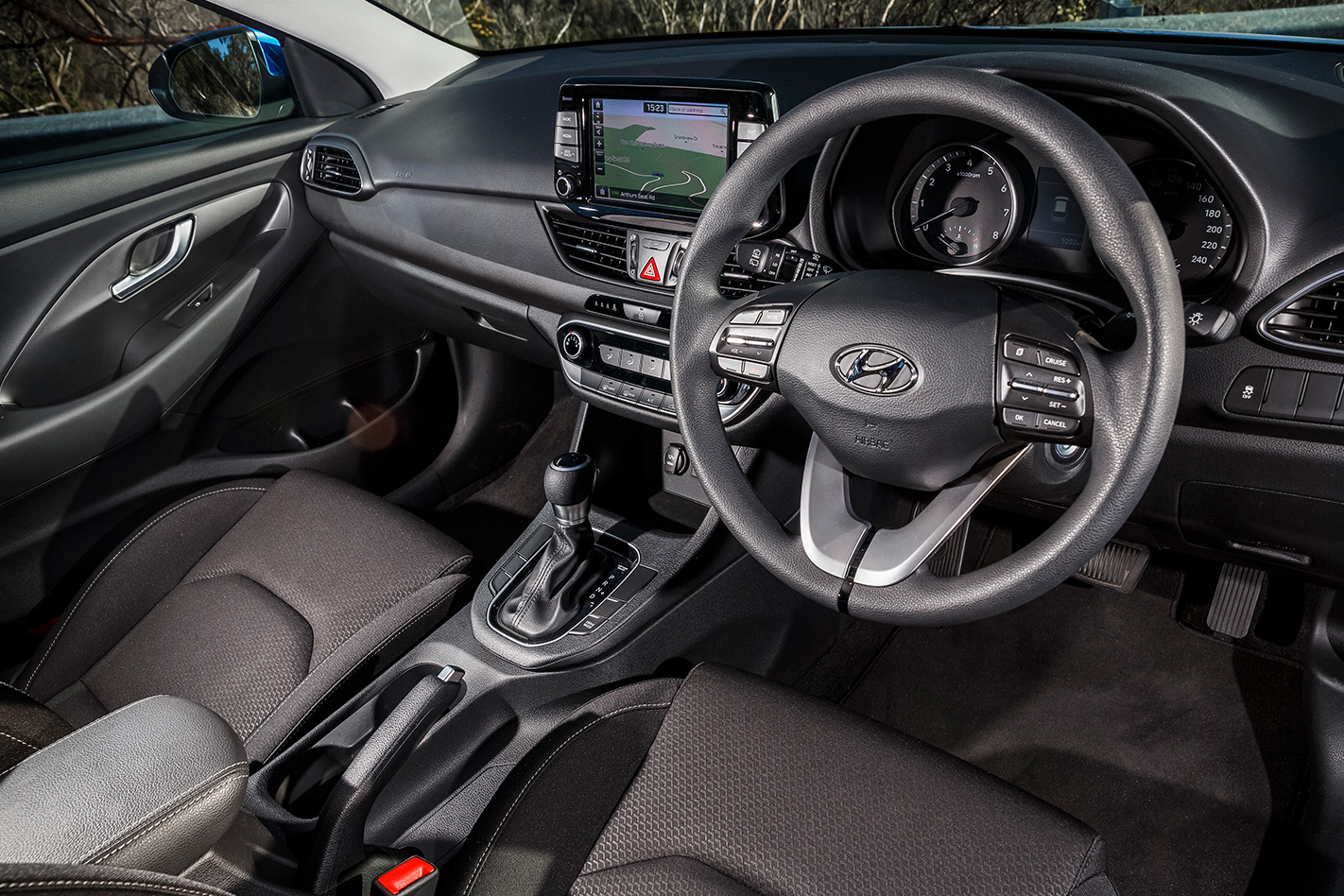
It’s a give-and-take battle inside each of these three, with the Corolla boasting the most space, the Mazda rocking the most sophisticated design and the Hyundai blessed with the most modern infotainment tech. It’s a different story on the road, with the ranking becoming clearer after spending time behind the wheel.
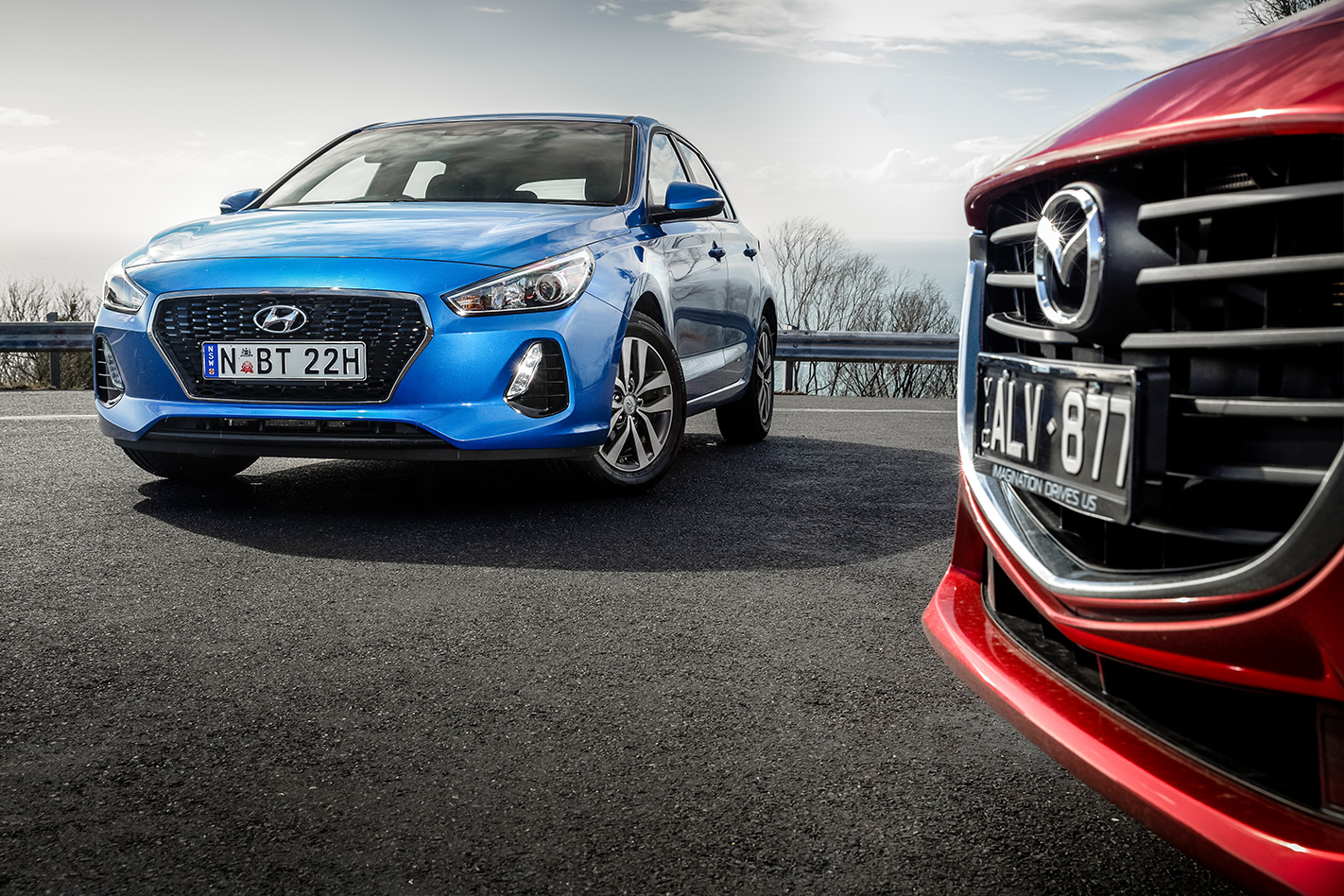
While the Corolla doesn’t completely shame itself around corners, it’s clearly not tuned with fast direction-changes in mind. Its slow steering requires a lot of input to get it to turn in, and though the Toyota is the only one in the group not to roll on efficiency-biased rubber (instead being shod with more upmarket Bridgestone Turanza ER300s), it was the most prone to understeer.
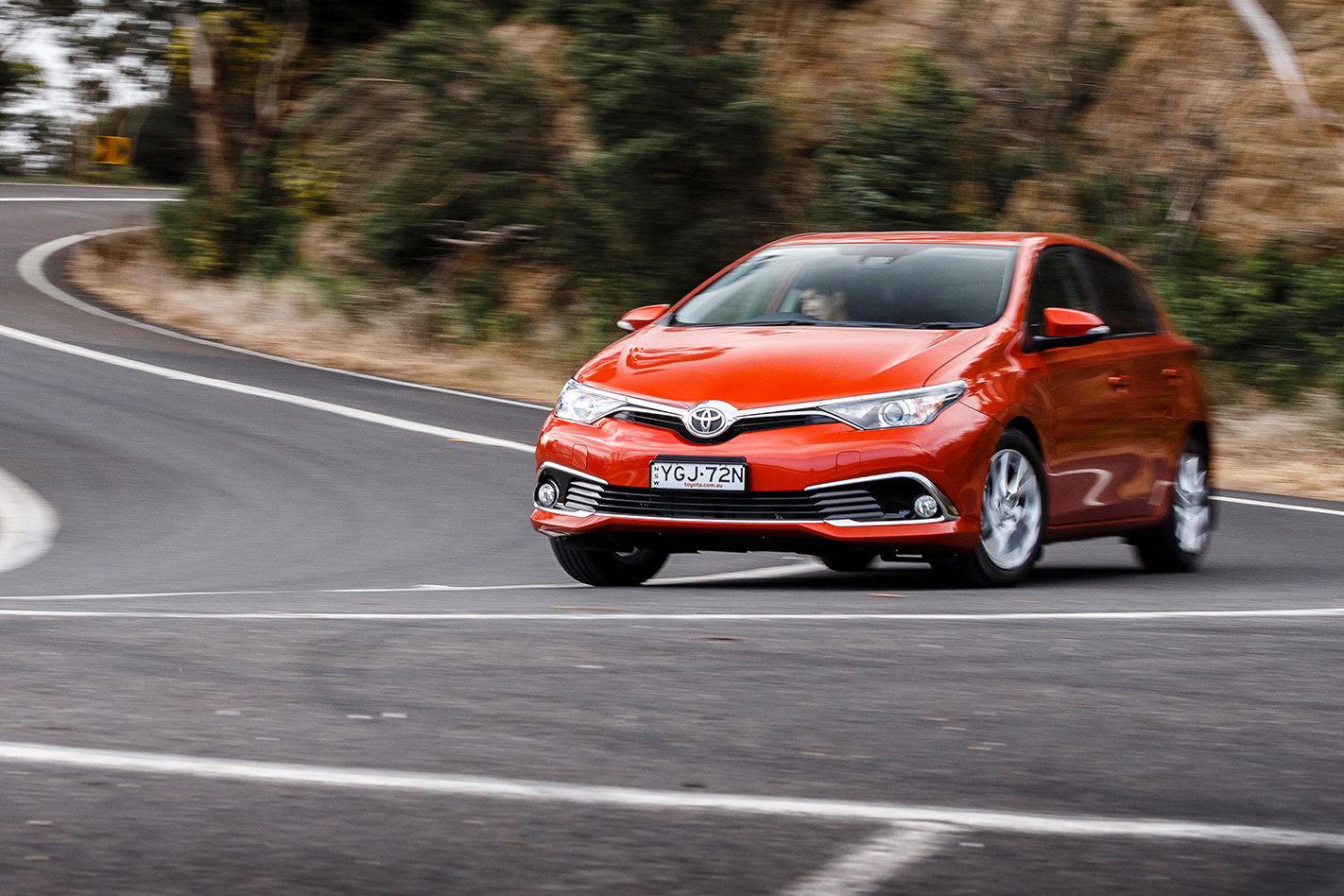
The Mazda 3 is commendably consistent when it comes to offering a full spectrum of performance. Its focused suspension is matched by an eager high-compression engine, which relishes revs and eggs the driver on through its rorty four-cylinder exhaust note. Mazda’s paddle-shifter-equipped six-speed automatic is a pearler too, with decisive shifts and a Sport mode that actually encourages spirited driving by holding revs higher and giving preference to lower gears.
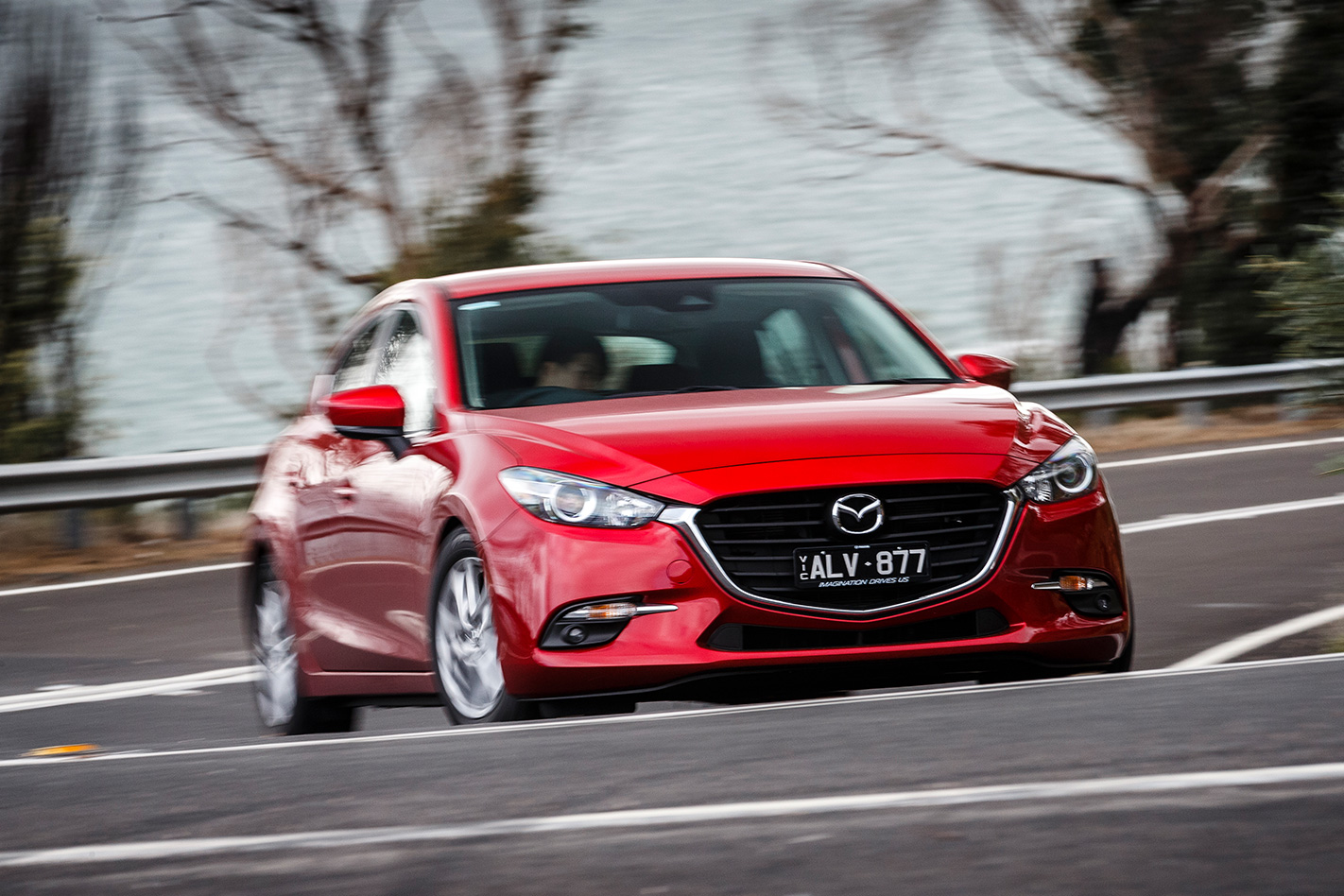
But if you want the car that is the most well-rounded and the easiest to drive, look in the direction of the i30 Active.
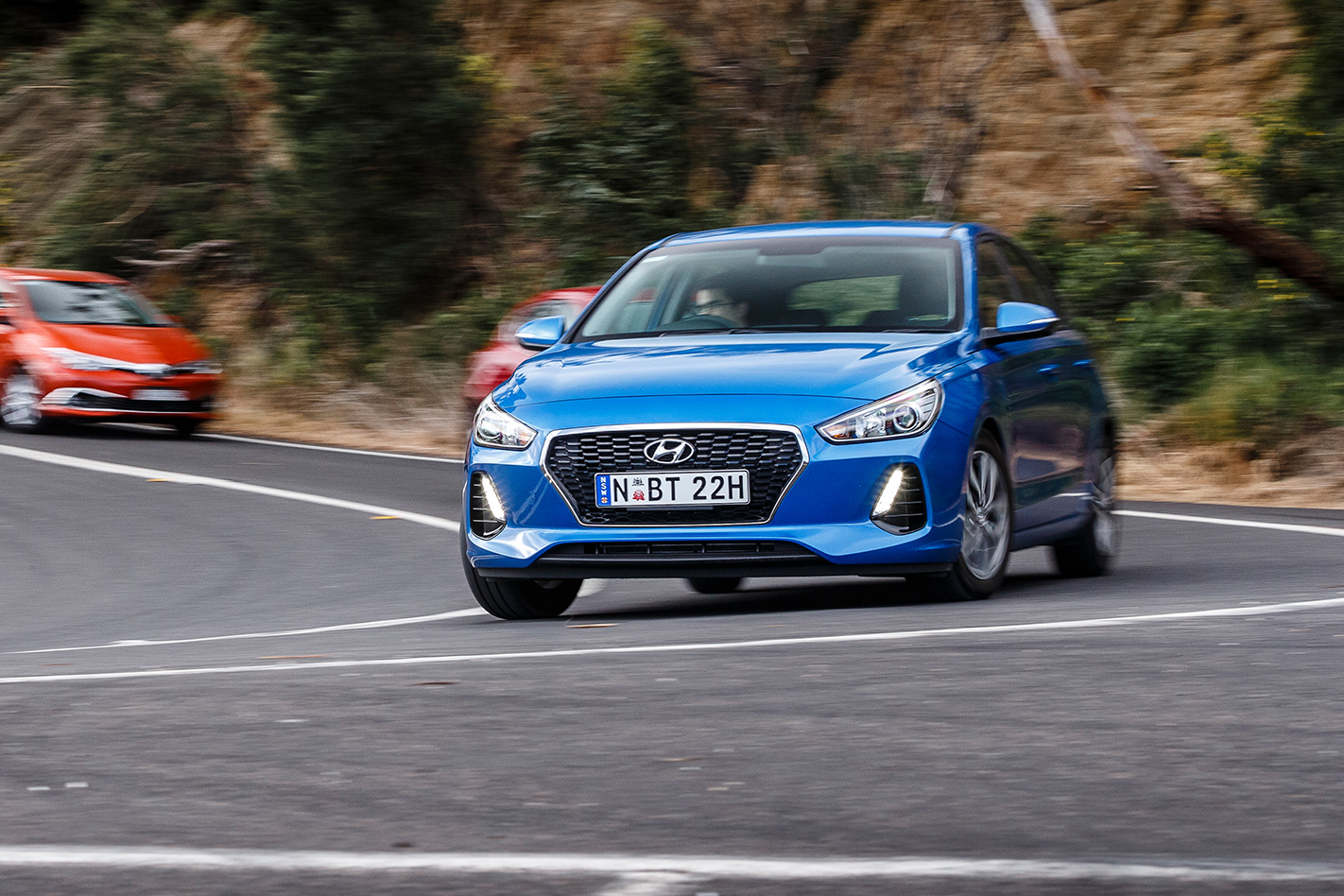
And that strong low-down urge is something the six-speed auto is eager to exploit, with a shift calibration that slips into tall gears as early as possible to keep the engine in the meat of its torque band – and keep fuel use down at the same time.
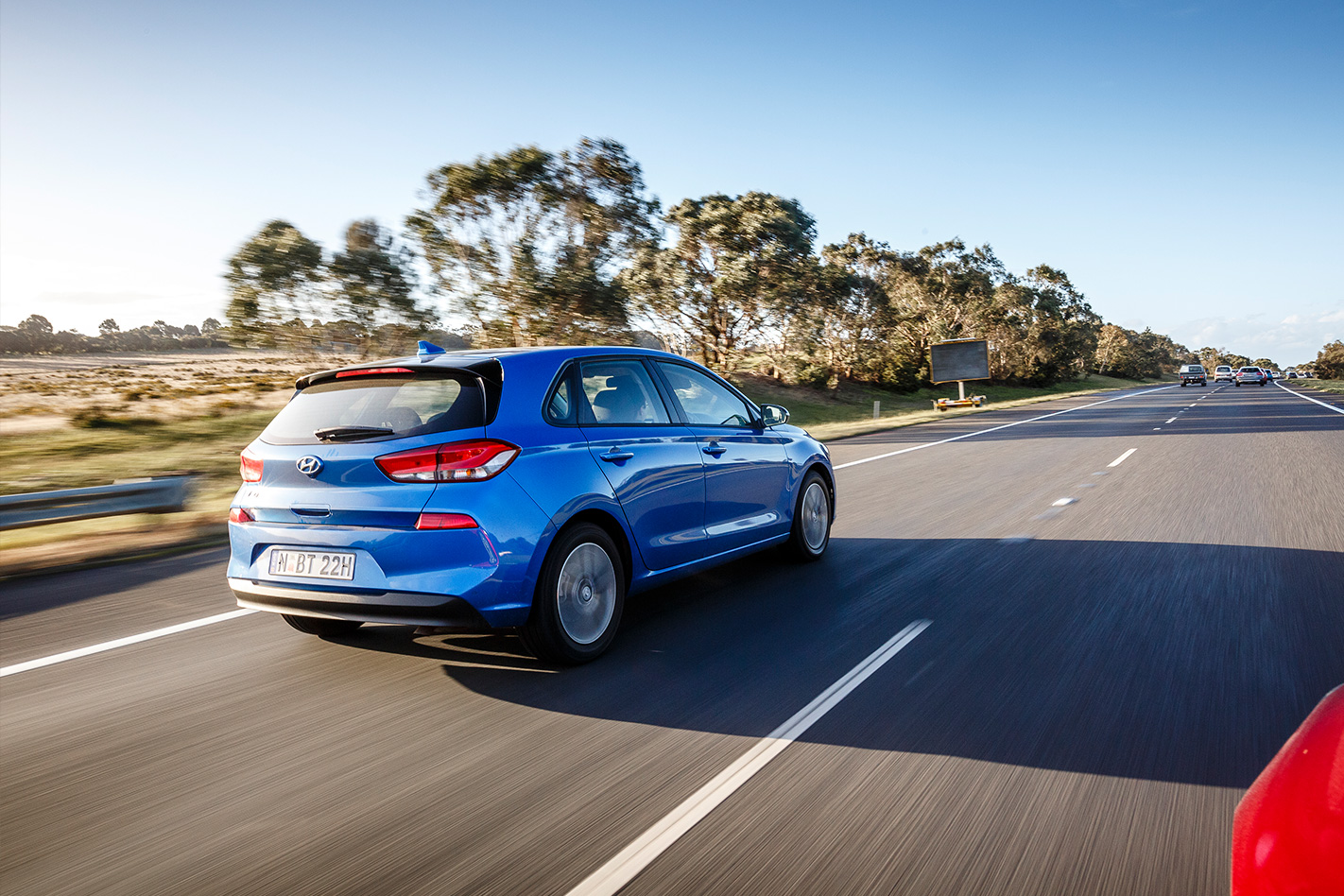
It’s not just powertrain supremacy that elevates the Hyundai. Its ride and handling offered the best compromise between ride and comfort, with some firmness at low speed giving way to a plusher ride at highway velocities. Even though its sidewalls are slightly shorter than the Mazda’s, the i30 exhibited greater pliancy over big hits. Hyundai makes a lot of noise about its locally-developed suspension calibrations, but it’s not just marketing spiel – the i30 has been adapted to Australian roads remarkably well.
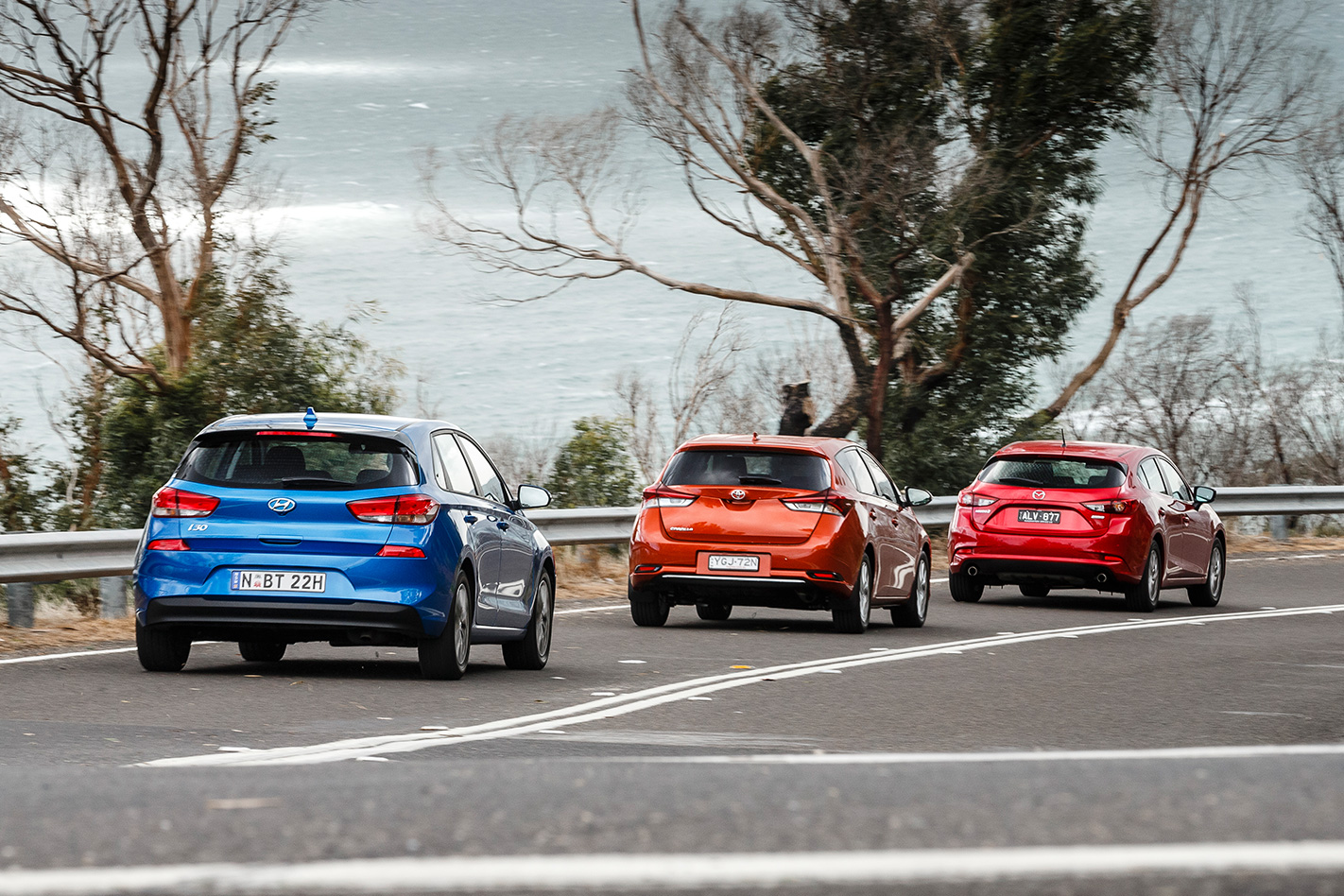
The absence of autonomous emergency braking on the i30 Active’s spec list is hard to ignore, however, especially as it’s the volume-selling grade. Its bare urethane steering wheel may also have some owners cursing they didn’t spend more on the up-spec SR as well, which not only has leather on the rim but also brings AEB, a multi-link rear end AND a zesty 1.6-litre turbo. There’s a much wider gulf in specification between the base i30 and higher-grade petrols than there is in other small car line-ups, and that’s probably the Active’s greatest drawback.
But even so, when judged against its direct peers it’s the Hyundai i30 Active that’s the best of the volume-sellers. The Mazda 3 is a close second, but unfortunately for Toyota the days of the “Corolla is best” mantra are fading into distant memory.
